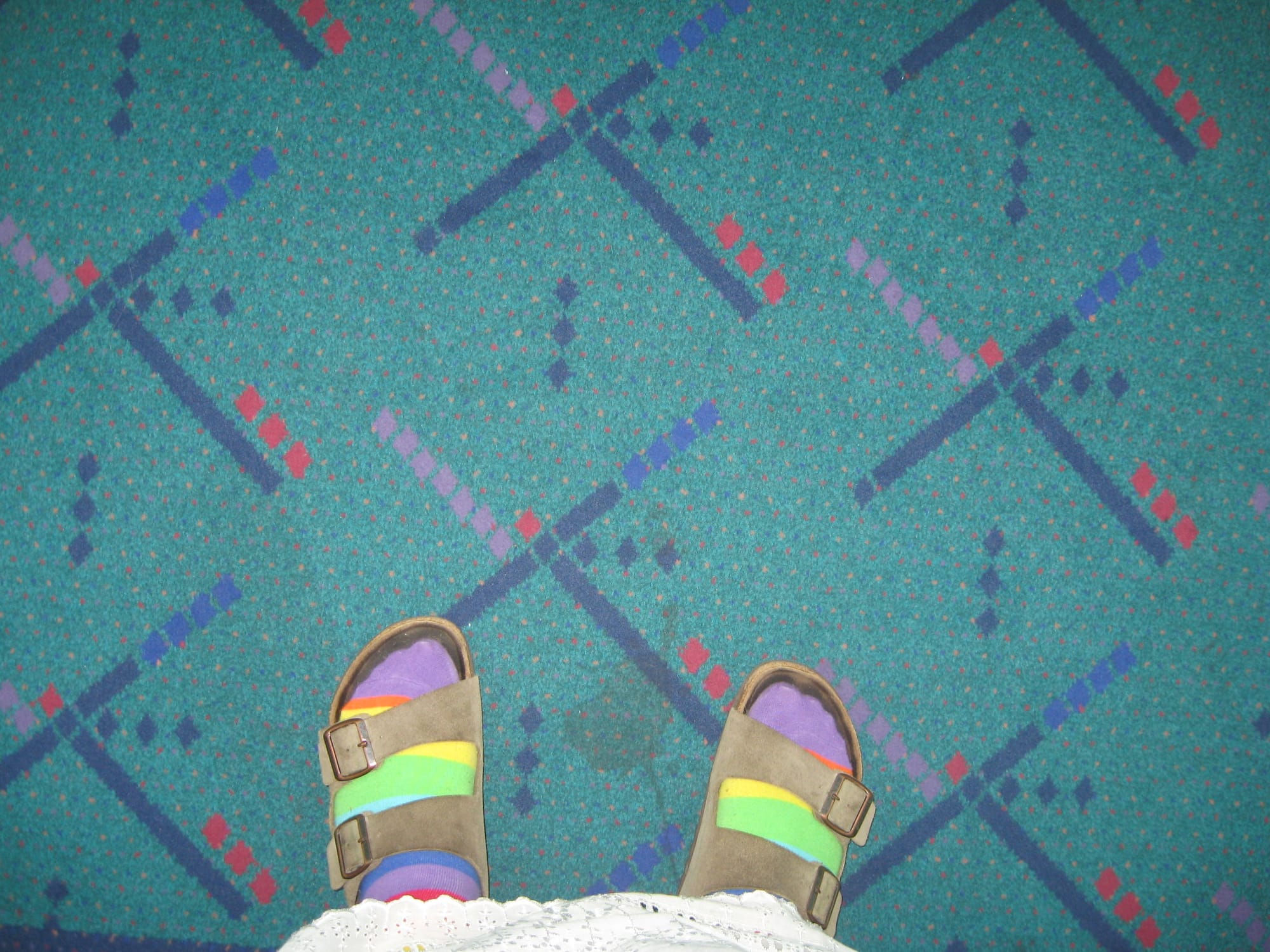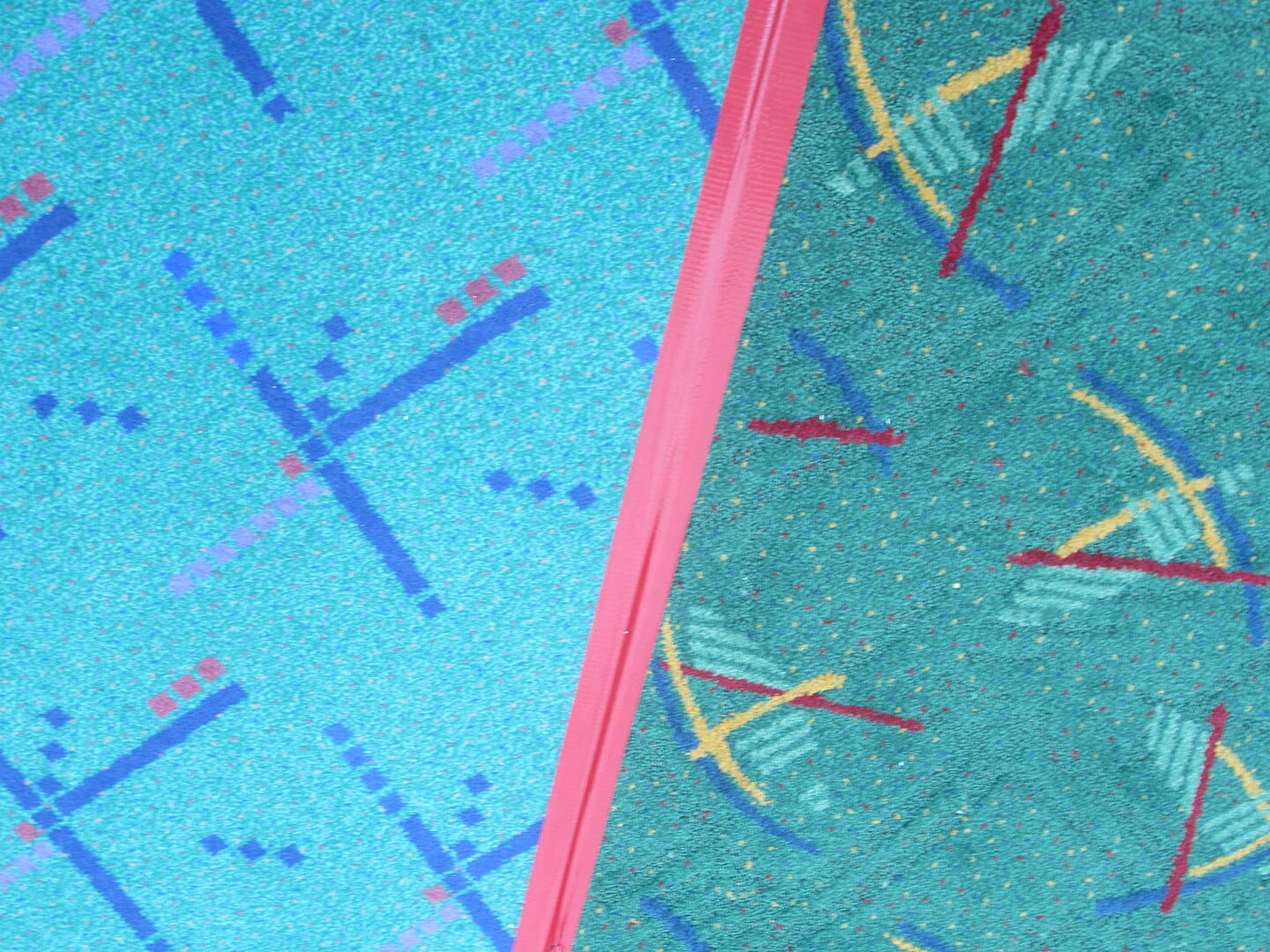Portland International Airport Carpet: From Floor Covering to Pop Culture Phenomenon

Portland International Airport (PDX) wasn't always graced with the teal-toned geometric wonder that became a local icon. Travelers in the 1950s walked on utilitarian brown terrazzo, followed by a forgettable blue carpet emblazoned with the Port of Portland's logo. But in 1987, a desire for a more welcoming atmosphere spurred a change.
Enter SRG Partnership, a Portland-based architecture firm. They eschewed the beige and oatmeal tones typical of airports then, aiming for a design that reflected the city's unique character. Their creation? A teal background splashed with geometric shapes – a visual representation of the intersecting runways as seen from the air traffic control tower at night.
Installed in the early 1990s, the PDX carpet transcended its practical purpose. It became a conversation starter, a quirky element that resonated with travelers. They began to see it as a symbol of Portland itself – a little offbeat, undeniably eye-catching, and a departure from the usual sterile airport experience.

Social Media Frenzy and Local Craze
Social media's rise fueled the PDX carpet's popularity. Images of travelers' feet planted firmly on the teal terrain flooded the internet, with the hashtag #pdxcarpet becoming a rallying cry. The carpet's fame transcended the digital sphere; local businesses capitalized on the craze, churning out PDX carpet socks, mugs, and even scarves. News outlets across the country picked up the story, further solidifying the carpet's status as a pop culture phenomenon. Passengers arriving in Portland weren't just landing in a city; they were stepping onto a viral sensation.
A Fond Farewell and a New Chapter
Despite its fame, time inevitably took its toll. By 2013, the Port of Portland announced the carpet's replacement. The news sparked a passionate response, with many expressing a sense of loss for the beloved floor covering. The removal in 2015 was a careful process. Worn sections were recycled, and remnants found a new life in local stores. Pieces of the carpet became coasters, phone cases, and even works of art – a testament to its enduring appeal.

A Legacy of Local Character and a New Design
Though the original carpet is gone, its legacy lives on. The PDX carpet serves as a reminder of how seemingly ordinary elements can become cherished symbols. It captured the spirit of a place and sparked a connection with those who experienced it, transforming a floor covering into a piece of Portland folklore. The story doesn't end there, however. In 2020, a new iteration of the PDX carpet graced the airport's main terminal. Designed by another Portland firm, Zimmer Gunsul Frasca Architects, the new carpet features a fresh perspective – a view of the airport's surroundings from a plane's vantage point, with shapes that showcase flight, nature, and local landmarks.
The new carpet's design pays homage to its predecessor in a subtle way. Look closely, and you'll find a faint outline of the original's geometric shapes, a nod to the enduring fondness many hold for the teal icon. The PDX carpet may have evolved, but its spirit of embracing Portland's unique identity and sparking connection with travelers continues.

Beyond its local fame, the PDX carpet story resonated with a broader design conversation. Airports, traditionally sterile and functional spaces, began to explore incorporating elements that reflected the local character. The PDX carpet became a case study, demonstrating the power of design in shaping a place's identity and fostering emotional connections with visitors.





